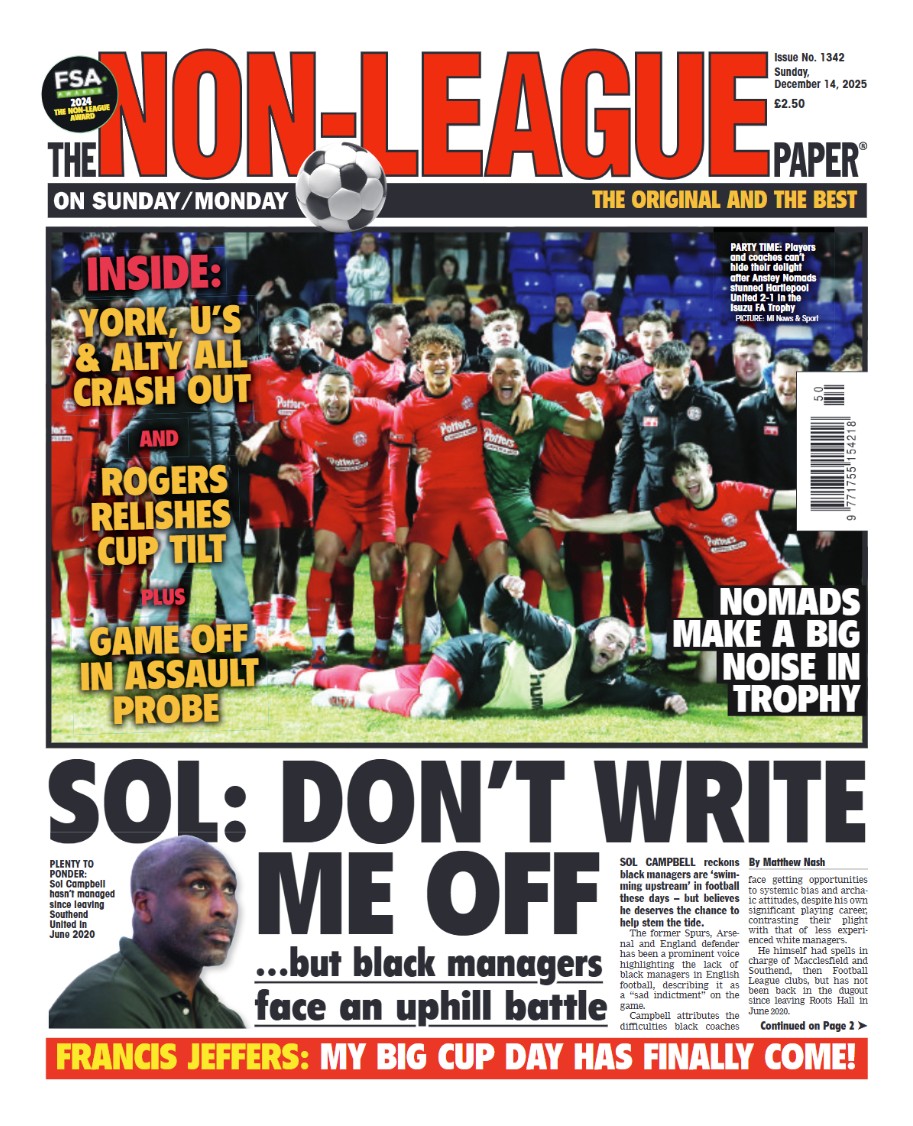
Non-League football refers to football clubs playing outside of the main professional leagues in the Premier League and English Football League (EFL).
With over 7,000 Non-League football clubs playing in England, they offer fantastic community spirit for fans and make up a large part of English football. Some of the top Non-League clubs have an average match attendance of 5,000, the lure of cheaper entrance prices (and beer!) making it a great afternoon out for fans. Top English stars like Jamie Vardy, Ian wright and Charlie Austin all kicked off their playing careers at Non-League clubs.
Non-League football has become so popular that James Doe founded Non-League Day in 2010. Now an annual event, it is supported by Premier League and Football League clubs, celebrities, media organisations and of course, the fans! Non-League Day is always scheduled during an international break towards the start of a season to give football crazy and loyal fans something to look forward to, as well as the opportunity to show their support for their local Non-League clubs.
Lots of people are unaware of how Non-League clubs benefit whole communities and are often run by volunteers with any profits used to fund new facilities and youth projects.
The Football Pyramid
The organisation of the English football League can be confusing. However, the football pyramid helps breakdown the different levels of leagues currently playing within England. Starting at Level 1 are the Premier League clubs followed by Level 2, Championship clubs. Next come Levels 3 and 4, League One and League Two clubs. Any club at level 5 or below are classed as Non-League.
History of Non-League football
The National League system for football was created in the 1990’s by The Football association. The main aim of the National League system was to streamline the process of promotion and relegation through the different levels of the pyramid from Non-League all the way up to professional levels.
Football leagues have been around for over 100 years in some form or other and have always been Britain’s most popular sport. The two main leagues in the late nineteenth century were the ‘Football League’ and the ‘Football Alliance’. The latter was merged into the Football League in 1892. Within the league, there were Northern and Southern league sections. More leagues were created as time went by.
By 1979, the Alliance Premier league was formed and made up of Southern League and Northern Premier League clubs. This allowed promotion and relegation between the clubs within the leagues. Although the Isthmian League was becoming one of the strongest semi-professional leagues and was made up of Premier, First and Second divisions, it wasn’t a part of the Alliance Premier League until 1985. The Southern league by then was made up of two separate divisions, the Midland and Southern division.
In 1982, the three main feeder leagues were the Northern Premier League, the Southern league and Isthmian league. The Southern League was now split into three divisions with a new Premier division, as well as Midlands and Southern divisions. By this point around eight clubs every season were promoted into the Northern, Southern and Isthmian leagues and around five clubs were relegated.
1984 was the year that the Isthmian league expanded and split its Second Division into Second Division North and Second Division South before being finally accepted into the Alliance Premier League. The champions from each of the leagues were promoted into the APL and the three teams with the lowest points were relegated from the leagues. It was common at this point for those teams in the Southern and Isthmian leagues to crossover. Clubs in the south east of England were often free to choose which of the leagues they wanted to play in.
The Alliance Premier League was renamed ‘The Football Conference’ in 1986 and from 1987 onward, the winners earned automatic promotion within the Football League. The Northern Premier League also added a new First Division along with the Premier Division. The first Football Conference club to be granted promotion into the Football League was Scarborough at the end of the 1986-1987 football season.
Dawn of the Premier League
One of the biggest changes in football as we know today was the formation of the Premier League in 1992. As a result, the Football League’s Fourth Division changed its name to the Third Division. At this point in Non-League, the Isthmian League reorganised its divisions again, combining its North and South divisions to create a new Second and Third divisions.
2004 saw another big change when the Football League Third Division was renamed Football League Two. The original Football Conference League was renamed the Conference National and a new league level was introduced under the Conference National with two new divisions, Conference North and Conference South. The Isthmian League’s two North and South First Divisions were also merged into one and the Second Division was moved down to Step 5 of the Non-League pyramid structure and Step 9 when the fully professional leagues are included.
At the start of the 2006-2007 season, the Isthmian League First Division was once again split back into the North and Southern divisions, partly to reduce the costs of travel. The Southern League Division one was regrouped into a Midlands division and a South and West division. In 2007, the Conference National was replaced with a new name: ‘Conference Premier’ and the Northern Premier League’s Division One was finally split into separate North and South sections.
Another important change occurred in 2015 when all of the Football Conference Leagues and its divisions were renamed as The National Leagues, the name we still know it as today. Then, on the 9th of April 2020, all Non-League football below National League football was suspended because of the Coronavirus epidemic sweeping the world. This was the first time since the outbreak of the Second World War in 1939 that Non-League had come to a standstill and the first time the Football League had been suspended.
Betting
Non-League football is gaining more popularity with each passing season. As a result, betting on Non-League football matches can be very profitable with the betting market and the number of people placing bets increasing. All top Non-League games are available for gamblers to place bets on. It’s important to do your research before placing your bet so you have the latest up-to-date knowledge on the players and teams. Have them handy and at your fingertips could result in a winning bet.
In general, there isn’t much difference between betting on Non-League football and Premier League teams. However, certain sports betting websites will offer better options than others. If you are looking for the best place to place your Non-League football bets, all betting fans know that sure bets exists and you can use them to enjoy guaranteed wins. Sure bets is a tool offered by Oddspedia to guarantee you a profit. How does it work? Odds for particular matches are scanned across all bookmakers and the internet to create a formula whereby a profitable bet is secured no matter what the outcome! Use this essential site to find the most profitable bets for Non-League football matches.
Make sure you get your copy of The Non-League Paper from this weekend!
In print and online 24/7 as a full digital replica since midnight on Saturday, The NLP’s news pages are the only place to stay informed and entertained while getting the big picture from across Non-League in one place.
Get ahead of the game with our free weekly newsletter and never take a chance on missing your paper on a Sunday or Monday again!
Subscribe today to have the printed edition delivered to your doorstep or enjoy the full digital edition from the comfort of your own home or wherever you are when it pops up on your mobile or device!
The only national paper devoted to Non-League football, as a digital edition The NLP is available whenever and wherever you want it. Try a free sample of a recent edition today if you’re staying home or on the run. You’ll save cash as a one off or regular digital reader and the pages still rustle like the printed paper too!
Images courtesy of The Non-League Paper
















